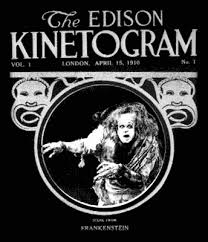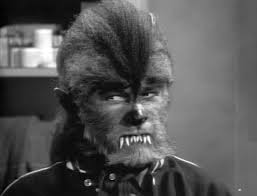I typed into google images ‘paintings of schizophrenia’ and here is what came up:
From this research I can see that most paintings/pictures show two faces,
The literal definition of schizophrenia is :
I typed into google images ‘paintings of schizophrenia’ and here is what came up:
From this research I can see that most paintings/pictures show two faces,
The literal definition of schizophrenia is :
After creating the image I started putting the text on the poster, however, as I was just playing around to see what fonts worked best with my horror poster, I have decided that his version of my poster will be a draft:
The reason why I feel that this is not the appropriate font is because it does not fit in with the genre of a psychological horror, therefore I have made changes to my original poster.
The things that will dictate my magazine publisher:
All of these things will be taken into account when choosing the publisher of my magazine publisher
After researching different publishing agencies I am not entirely sure on who to choose to publish my magazine. I want to make sure that my magazine has the best possible coverage so that my whole age group of my target audience are able to have access to it. After looking at Future Plc, I found out that Future Plc publishes Total Film magazine and Bauer Media which publishes Empire magazine. Empire magazine is the main competition for my magazine because they are the biggest film magazine available in the UK and therefore if i went with Future Plc the competition against my own magazine would be extortionate and this would not be very good publicity for my own horror film. Therefore I have chosen a not so well known publishing agency: ‘Image Publishing’; http://www.imagine-publishing.co.uk/portfolio/magazines
As i’ve seen on the website they have different magazine categories and film is not one of them, therefore it will stand out. There is a wide-rang of magazines published by Image Publishing such as a game magazine, a photoshop magazine, and as my target audience is from 18-35 those who read the other published magazines would be intrigued to also read mine.
Relating “Dyers Utopian Theory” to my horror trailer: LUC▲D
I will be using Dyers Utopian Theory to help motivate and encourage my audience for LUC▲D (My Own Idea). As my audience will be between the ages of 18 to 30, (near there or abouts), Dyers Utopian theory will be specifially used with ‘Solution’ and as I am targeting teenagers and young adults, also ‘Energy’. This theory is relevent to my horror trailer in particular, as a horror film may offer energy through portraying scary and jumpy scenes, or for example a scene that will build up tension. Specifcally in the explanation of: Scene 5
“As Josh slowly approaches what is seen as a person who is sat on the floor, cross legged, alone, rocking forwards and backwards. Josh taps the person on the shoulder, and as the person turns around”
Through special effects and special lighting once the film is actually made, the trailer will be perfect for building up tension. A horror film also tampers with the audiences emotions, and therefore as the character “Josh” is a very relatable character, Dyers Utopian Theory will be even more fitting. As I have created a twisted storyline that opposes the social norms (which is any horror film anyway) this reinforces the Utopian theory even further, thus connecting with the audience.
Maslow’s Hierarchy of Needs
How does this relate to horror films and the audience:
General society have overwhelming fear relating to their specific needs. Humans have a fear of pain and a fear of not being able to fulfill everything that is basic in our lives even without thinking about it, psychiological needs are all subliminal. Being without oxygen, food and everything else for most is not at the forefront of our minds, therefore, horror films bring it to the forefront of the audiences minds, making the audience aware of the needs that we desire; loosing control, fearing pain and experiences that may effect our need for affection and family is all highlighted and strengthened when people watch scary movies. So, if scary films portray something that people fear, and bring everything to the forefront of ones mind it would be a successful horror movie.
For example, when relating this to my horror movie, in the trailer it will portray a normal teenager showing his needs when in the pub with his friends, and sleeping in his bed, however as this is taken away from “Josh”, abnormality starts to kick in, therefore the audience will see this abnormality especially as “Josh” experiences mental health problems. Especially in scene three Josh starts to experience his crazy dream, and it slowly starts to become his reality: “Suddenly snippets of the extreme, trippy and crazy dream that Josh has, flashes of sudden appearances of Josh bugging out within this dream, these flashes will include changes from the dream to Joshes face. The camera effects will be glitchy. The soundtrack for the trailer will also be glitchy increases the tension and upheaval about to happen.” This camera scene will portray weird things happening and as Joshes nightmare begins to come true the audience will find this fearful because it is not the norm, it challenges Maslow’s Hierarchy of Needs.
Cinema Audiences:
Define “Audience”: the assembled spectators or listeners at a public event such as a play, film, concert, or meeting.
These graphs can help my primary research to help select my target audience. From these graphs you can see that people for the ages from 15-34 are more than likely to attend the cinema. Also, as you can see in the first graph, the horror genre is more popular, therefore creating a horror trailer, has been the genre I have chosen.
I asked family and friends and random people at school, “what do you want when you go to the cinema?”
Responses reviewed were:
Similar horror/ thriller trailers to my horror trailer:
Genre
Defining horror:
With regards to the audience of the Horror film, it is hard to distinguish a true relative audience in relation to the Horror sphere, there are many different types of horror film subcategories, thus defining the word ‘horror’ even harder. The audience have there own idea and opinion on the horror genre, therefore making the definition more of a speculation rather than a definite idea of ‘horror’. Its is difficult to pin down different horror means, because of the socio political context; the society and political attitudes at the time.
The audience and horror:
However, ‘Horror’ itself can be defined as a whole through the stars and genres within the film itself, Why do the audience see mainstream entertainment films? Because of the stars and genres within the horror sphere, therefore, the main definition the encompasses horror is defined by the celebrities and stars involved in the horror film. The word ‘genre’ is what we collectively believe it to be.
A genre is defined by its iconography and the distinctive thematic and structural terms– therefore the conventions of a horror film define the genre ‘horror’
Audiences understanding of horror is similarly fragmented, pragmatic and short-term, audiences understand horror through their own experience, and they understand what horror is which specifically relevant to them, horror is therefore inevitably different for everyone.
History and horror:
For example, originally, the Dracula film was marketed as a weird thriller but the audience accept it as a horror film since the 1950’s. The audience changed the genre as the majority experienced it as scary watching the film. The ‘horror’ genre changes over-time in relation to the changes within society. Different opinions are made on what a horror film is, obviously the term ‘horror’ would have changed from the 1930’s until the 1970’s, the context in which you find horror changes massively, historical changes will occur as time goes on.
Dracula as a thriller (1931)
Dracula as a horror – film (1958)

Other historical horror films:



The presence of such films in the pre-1930’s period showed that when horror cinema did emerge, it did not come from thin air, so to speak, but instead often drew upon and reworked elements already present within cinema.
Many critics have also seen gothic literature as providing another important source for the horror film.
Here is a scanned image of how horror has developed overtime:
Horror movies also change and reflect in relation to the present day social cultural issues, here is a word-document that i’ve highlighted the relevant quotes and issues showing examples of how Horror films reflect the present day socio-cultural issues within society…